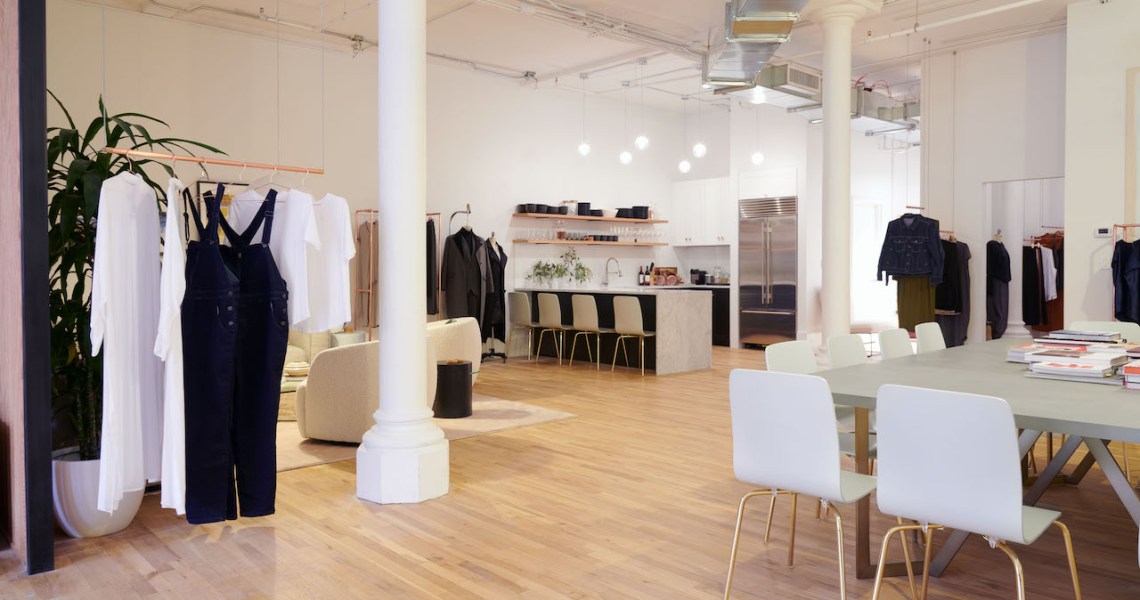For years, bold moves toward size inclusivity were squarely in the domain of smaller companies that made it a differentiating focus. But this year saw a number of big brands following in the path of their younger counterparts.
For example, Old Navy launched in August its Bodequality project. It required overhauling its supply chain to produce each of its women’s apparel products in sizes 0-30. Old Navy used the same ideas that Universal Standard has been using since it was founded in 2015.
At the time of Bodequality’s launch, Alison Partridge Stickney, head of women’s and maternity merchandising at Old Navy, said a key goal was “to make the entire shopping process feel inclusive, [with] no walls between customers.” Likewise, Universal Standard’s co-founder Alex Waldman has said the brand’s goal is to “desegregate fashion” and “remove the divide” between customers. And, back in 2017, size-inclusive retailer Dia & Co published a full-page New York Times ad urging fashion to “[break] down any barriers” between customers of different sizes.
Alex Waldman, co-founder of Universal Standard, said she sees Old Navy’s move as a good sign for the future.
“Though Universal Standard is still the only brand in the world to carry this vast of a size range, we never set out to be the sole source for size-inclusive clothing. We set out to start a revolution,” she said. “My co-founder Polina Veksler and I created Universal Standard to democratize the fashion industry. So we champion any brand that follows in our footsteps.”
Universal Standard’s revenue grew more than 70% in 2021, and more than 80% of its audience are repeat customers. Size-inclusive brand Good American, which makes jeans in sizes 0-32, flourished in 2021. It’s projected to reach $155 million in revenue by year’s end, up 85% from 2020. Parade also grew rapidly, raising $43 million this year and quadrupling its 2020 revenue, thanks to its emphasis on universal size inclusivity. Its size range is XS-3XL. And established brands Jimmy Choo and JW Anderson added extended sizes to their existing product lineups — Jimmy Choo now makes women’s shoes up to a European size 45.
Coresight Research estimates size-inclusive fashion will reach $32 billion as a market this year, and more than 20% of U.S. women are potential customers.
Ad position: web_incontent_pos1
Much of the progress in inclusive sizing this year was made in baby steps, brands adding a few extra sizes here or adding a new inclusive line there. The big splashes like Old Navy’s massive Bodequality campaign aren’t feasible for most, according to Nadia Boujarwah, CEO of inclusive fashion retailer Dia & Co.
“Old Navy’s announcement is the new gold standard,” Boujarwah said at Glossy’s Fashion Summit in October. “They’re selling more [sizes] than a lot of brands. They’ve eliminated a lot of the worst pain points like only selling larger sizes online or having a price disparity between smaller and larger sizes. But very few brands can make the investment that Old Navy did, all at once.”
Boujarwah said that splashy size overhauls, like Old Navy’s, can intimidate brands that need to make more subtle moves toward inclusivity. She said brands should take any step they can and communicate their prioritization of inclusivity to their customers.
But Waldman warned that those small steps shouldn’t be seen as a replacement for transformative action.
“We continue to challenge [large] brands to create a shopping experience that is an equalizer,” Waldman said. “While we celebrate all steps toward inclusivity, no matter how small, offering a limited number of select styles in a specialty category still ‘others’ shoppers of a certain size. What we want is a new archetype that allows a size 4 and a size 34 to shop in the same way, using style as the only filter.”




